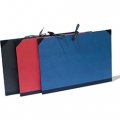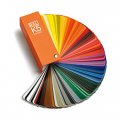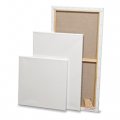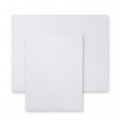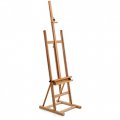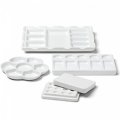RAL colour system
Information about RAL color system
The Reichs-Ausschuss für Lieferbedingungen (RAL) was founded as a joint venture of the private sector and the former German government at the time (1925). (Translation: Imperial Commission for Delivery Terms and Quality Assurance). Its original mission was standardization of technical delivery terms with rationalization as the ultimate goal. Today, RAL is the recognized authority in Germany for reliable designations relating to products and services (marks of certification).
A RAL mark of certification is usually given to a "community of quality protection" (a community of interest formed by manufacturers or vendors) in the legal form of a registered association. Based on the requirements of the association’s by-laws, this product community cedes the right to use the respective marks of certification to a third party. Those that wish to implement these marks of certification agree to abide by the appropriate rules and regulations, to fulfil the test requirements and to accept being periodically reviewed.
One of the most well known marks of certification that is given directly by RAL Deutsches Institut für Gütesicherung und Kennzeichnung e.V. (German Institute for Quality Assurance and Certification) – this is the modern name of the former Imperial Commission – is the Blue (Environmental) Angel. In addition, there are a large number of certification marks for construction, agriculture and nutrition fields, for services and many other products.
RAL Paints and Colour Fans
Rationalization was a central concern of the paint and pigment industry in the 1920´s. They therefore came to a mutual agreement with public authorities and consumers in making a chart of 40 colours which consisted of primary colours and mixed colours. This chart was recommended to RAL and it has been administered under the registration number RAL 840 since 1927.
The original 40 RAL colours have in the meantime grown to 1898. Thirty of the original colours continue to serve as the standard. Additionally, the system has been divided into the RAL Classic Colours and the RAL Design System. Each of the two colour collections has its own group of colour fans, colour cards and colour books available. For our product line we have limited ourselves to the most established regulating media. The complete range of RAL color fans and cards can be found in the internet under www.ral.de
RAL Classic
: The 40 colours which constituted the original comprehensive colour collection has in the meantime grown to over 200 RAL colours. These classic RAL colours with their four place identifying numbers are grouped in the basic collections RAL 840-HR (matte colours) and RAL 841-GL (glossy colours). They contain all the colours that are, for example, used by important institutions or that serve particular purposes of general interest.
The collections are continually being updated so as to reflect the needs of industry. They serve as the colour guide for design work but contain security and signal colours as well and fulfil the specifications of the DIN norms. Over the years the RAL colours have achieved practical acceptance as the German norm for colour tones, most especially as the colour specifications for the building industry.
RAL Design-system
: The RAL Design system was developed for use in professional colour design and is not only used all over Germany but internationally as well. The revised system is oriented to the NCS system (Natural Color System) and contains a total of 1.625 colour tones which are arranged in an easily apprehended manner in a single book.
Each of the colours, which are identified by a seven digit number, is a defined, discrete RAL colour. In contrast to the classic RAL colours, this number is not arbitrary but rather uses an international colour measurement system which defines the values for primary colours or, alternatively the hue (H), the lightness (L) and the saturation or chroma (C) of the colour.
So it is that RAL 210 60 30 is a colour with the hue 210, the lightness 60 and the chroma 30. If you want to combine this colour with another lighter one you can choose, for example, RAL 210 70 30 because that colour has a lightness of 70, i.e., a greater degree of lightness. All other attributes of the two colours are the same. This system makes possible the problem-free creation of harmonious colour combinations.
